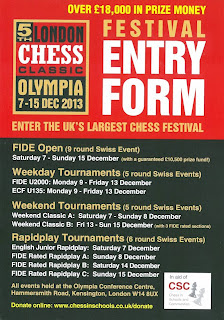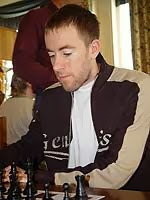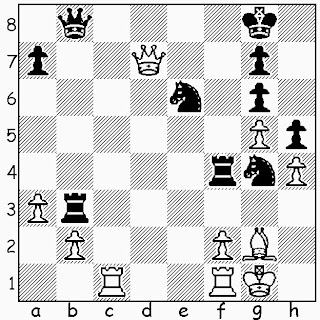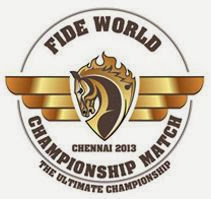This, from Competitions Secretary Mike McNaughton:
There was a young man from Japan
Whose poetry just wouldn’t scan.
When told this was so,
He replied, “Yes, I know,
But I always try my best to fit as many words into the last line as I possibly can“
This rather silly limerick illustrates something that has been concerning me for some time and especially recently; namely that we seem to be trying to compress too much chess into too narrow a time frame.
Someone has to arrange the fixtures; and in Suffolk that person happens to be the Competitions Secretary.
I can remember the time, on Merseyside, when we had something called a 'fixtures meeting' (otherwise known as Pandemonium) when representatives from all clubs were present and the name of the game was to sort out all the fixtures on the night. These meetings resembled a game of musical chairs, and experience taught me one thing - come prepared. You needed a game plan; decide your ideal fixtures in advance, bag your opposite numbers early, and you could usually get your matches in some sort of decent order.
Realisation slowly dawned that this kind of free for all might not have been the most sensible way of dealing with fixture management, and the way forward might be to appoint an all-wise, all-knowing official whose responsibility it would be to arrange the fixtures in some sort of coherent order, in a way which would be fair to all concerned.
Problem solved. Or was it?
It ought to be so easy. For those who aren't aware of it, there exists something called the Hutton Pairing System. This is mainly useful for jamboree events of the kind I used to organise in the North of England, but it can also be useful when arranging individual or team events.
So if you have, say, six teams, you allocate letters to each team, A to F. Round 1 is A v E, B v D, F v C; Round 2 C v B, D v A, E v F and so on. Easy-ozy. You can access these pearls of wisdom by clicking here.
And in fact, with the second and third divisions, this system worked very well this year. The difficulty comes with Division One. The problem that I have (and not just me, it would be anyone who happened to fill the post of Competitions Secretary) in arranging fixtures for the Suffolk Chess Association (SCCA) is something like this.
It has been the practice that BACL fixtures are arranged first. There are two good reasons for this; firstly, the BACL First Division is larger (7 teams as opposed to 6) and secondly, BACL have the ‘Cambridge problem‘ – namely that a University does not really get going until October.
So, for better or worse, the BACL fixtures secretary, or whatever you call him, has a blank sheet of paper to work with, and the SCCA counterpart has to fit in the fixtures in what is left over after his BACL equivalent has finished eating. I wish to make it clear that this is no criticism of the BACL officials. I think the problem is structural – too many fixtures and not enough time.
So the ‘problem' for me was that I was faced with a situation where quite a number of weeks were already occupied by BACL fixtures and no club, not even Bury, likes too many matches in the same week. In addition I was asked to avoid fixtures which clashed with the BACL Roger Goldsmith Competition. This request was subsequently modified to refer only to the higher rated of the two competitions. However, there is a way round this difficulty; there is no overlap between the Roger Goldsmith and the SCCA League Cup, and that would suggest SCCA League Cup fixtures could, and should, be fixed for the same week as BACL Roger Goldsmith 1 fixtures.
The earliest realistic week for fixtures is the third week in September. There are fourteen weeks between then and Christmas which are available for playing matches. But the first of those weeks (third week in September) is the week of the Bury Jamboree. In the period after Christmas the position is slightly better; there are 15.
To perform a draw with the Hutton system in a League with six teams you need five clear weeks, on the assumption that, say, A plays E, B plays D, F plays C in Round 1, and so on. Where there are six or seven teams in a League, you need seven clear weeks.
So it’s a matter of simple arithmetic; if you have fourteen weeks, one of which has to be kept clear for the Bury Jamboree, two for Roger Goldsmith fixtures, and seven for BACL fixtures, there are only four for SCCA, and the figures do not stack up, although where the Cambridgeshire clubs are concerned there is no overlap.
This year we have a situation that Ipswich have three teams in Division 1, and Bury have three in Division 1 BACL. The result of this is that, if you do a Hutton draw, it means that a Club which has three teams in the same division will have all its teams playing in the same week; and somehow, I think this is a situation which no club would welcome – not even Bury or Ipswich.
Summary
Ideally, I, as SCCA Competitions Secretary, would like to see a protocol that would require the BACL Match Secretary to leave a minimum of five weeks where there were no First Division BACL fixtures which involved Bury.
Games involving the four Cambridgeshire clubs do not interfere with SCCA, and BACL could arrange such fixtures in the five free weeks. This would make it relatively easy for the SCCA Competitions Secretary to do a draw for SCCA Division One using the Hutton system. The other two divisions in SCCA present little problem as there is much less scope for overlap. It would also seem sensible that games reserved for the Roger Goldsmith Division 1 should also be allocated to the SCCA counterpart, the League Cup.
If anyone would like to comment on Mike's article, please do so by clicking on 'Post a Comment' below.
.jpg)

















t.jpg)




